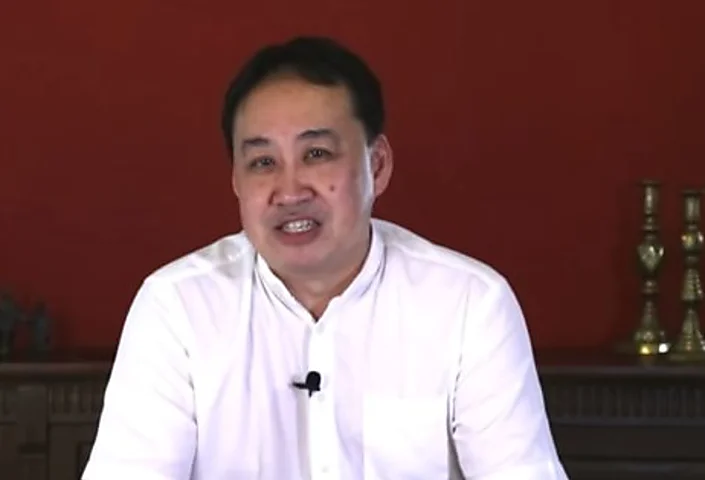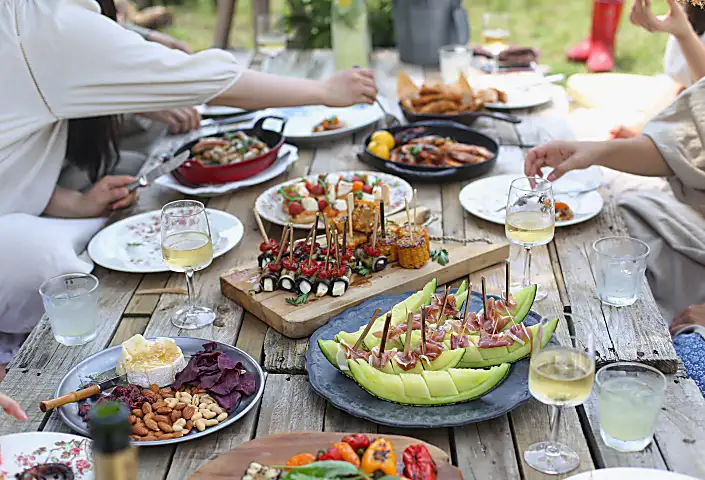- Joined
- Oct 30, 2014
- Messages
- 36,768
- Points
- 113

SINGAPORE — Debate over social enterprise-run hawker centres — a hot-button issue that has come under scrutiny in recent months — has been “in part fuelled by hearsay and anecdotes which have emotive appeal”, said Senior Minister of State for the Environment and Water Resources Amy Khor.
Seeking to dispel some mistaken beliefs surrounding social enterprise-run hawker centres, Dr Khor said the management model was never meant to be “a magic pill”.
“Some of these hearsay and anecdotes may be well-meaning but (are) misinformed. In fact, quite a number are really not verified,” she told TODAY in an hour-long interview at Kampung Admiralty Hawker Centre on Friday (Nov 16).
The Government’s stock-take of the social enterprise-run hawker centre model is also not a knee-jerk reaction, as the authorities always intended to “refine and improve the model as we go along”, she said.
The stock-take was announced about a month ago, after a series of complaints from hawkers and observers about unreasonable contractual terms and high ancillary costs.
The National Environment Agency (NEA), which oversees hawker centres, has announced several moves over the past two weeks to mitigate these concerns at seven new hawker centres.
In Singapore, 13 out of 114 hawker centres islandwide are managed by five social enterprise entities. Seven of the 13 centres are new, built after the Government announced in 2011 that it would restart the hawker centre building programme.
When asked if the authorities were aware of complaints before they were highlighted by hawkers and observers — such as consultant and entrepreneur K F Seetoh of Makansutra — Dr Khor would only reiterate that the NEA wanted to “set broad parameters” to begin with and “move in quickly” to address any issues that arose.
Operators were given some flexibility to implement innovative ideas, based on their experience in the food and beverage industry.
“Some of these are quite recent issues and we are working on it. The fact is we have worked very quickly to address them,” she said.
Having more formal feedback sessions with hawkers can help, she added, rather than having “misinformation, anecdotes, hearsay” making the rounds.
All five social enterprise operators — Fei Siong Food Management, NTUC Foodfare, Timbre Group, Hawker Management under Koufu, and OTHM under Kopitiam — have formed hawkers’ feedback groups in the hawker centres they manage, with at least one feedback session conducted in each centre so far.
Dr Khor added that the stock-take “will take a little while”. Some other areas the NEA is looking at are the selection criteria for operators, and what the authorities can leave to market forces.
ADDRESSING MISINFORMATION
While the authorities “appreciate the passionate conversations and discussions” about the hawker industry, Dr Khor said she wanted to address some misinformation — on rental and operating costs, budget meals and the deal that hawkers are getting — that “is really quite concerning”.
There have been claims that monthly rentals at social enterprise-run hawker centres are “astronomical and exorbitant”, she noted.
Dr Khor pointed out that the median monthly rent at the seven new hawker centres is S$2,000, while the median rent at comparable existing NEA-run hawker centres — based on location and amenities — is about S$1,700 a month.
The slightly higher figure accounts for the fact that the seven centres are new and better-designed, with stallholders able to benefit from larger stalls, better frontage, amenities and facilities, she explained.
The NEA also chooses operators that charge lower rentals and operating costs in their tender bids to run the new hawker centres. Operators are not allowed to change these costs during the hawkers’ tenancies, and have to get NEA’s approval to introduce additional charges.
“Even when we assess tenders and look at rentals, we also use guides from professional valuers. They assess fair market rent. They also look at tendered rent for existing hawker centres,” Dr Khor said.
On the issue of ancillary operating costs, Dr Khor said that those who compare the operating costs of existing NEA-managed hawker centres to those at new hawker centres are “not comparing apples to apples”.
The average monthly operating cost at existing hawker centres comes up to about S$600 while at new hawker centres, it is S$1,500. Dr Khor explained that the former only accounts for table-cleaning and service and conservancy charges.
Throw in dishwashing costs, which could run up to S$1,500 if hawkers employ an assistant for the task, and total operating costs at older hawker centres could go up to about S$2,100.
The S$1,500 average monthly operating cost at new hawker centres, however, already takes into account table-cleaning, service and conservancy, and centralised dishwashing costs.
“So I think (there’s) really quite a lot of misunderstanding and misinformation. Somebody just took one piece of information and said, rental is this, operating cost is this for existing centres, and it’s so low compared to social enterprise hawker centres. But they never said that the operating cost (for existing centres) doesn’t include dishwashing, which the stallholder has to do,” Dr Khor said.
Another area she highlighted was “this idea that we are forcing hawkers to sell their food at very low prices” — that is, at S$3 or less.
The reality is that hawkers are asked to sell only one budget meal priced at S$3 or less, and can price other dishes differently, she said.
“We are not artificially forcing the food prices of these hawkers to be low. We are just saying, ‘Sell one dish that is affordable and price the rest reasonably’. There is also a social objective of hawker centres and it’s to provide affordable food, but it’s not to the extent that hawkers cannot make a decent living,” she stressed.
She also tackled the notion that “operators are exploiting hawkers and that the Government does not care for hawkers”.
The Government has had the interests of hawkers in mind from the start, she said, pointing out that they require all the operators to plough back at least half of their operating surplus into the hawker centre for the benefit of the community. Operators also have to propose in their tender bids how they want to do so, such as giving meal vouchers to lower-income residents.
Asked if the NEA checks whether they follow through on their proposals, Dr Khor would only say that the agency regularly meets operators. Operators are required to submit their audited statements annually to the NEA.
Correcting an impression created that “all our hawkers are not doing well, especially at social enterprise hawker centres”, Dr Khor said: “The reality is that many are doing well. Of course we can do more to help the centres which are still new and struggling and building up.”
Yishun Park Hawker Centre, for example, which ran into some controversy over its tray return scheme when it opened late last year, “is doing all right”.
The NEA has been working with its operator, Timbre Group, to “facilitate programmes and innovations” that have increased footfall, she said.
“I think we cannot assume that once we build a hawker centre, it will be viable, it will do well. We need time to build this up, especially if they’re not in prime or very good locations, and that’s the reality,” she added.
Some regulations are needed at the new hawker centres, such as the number of hours and days that hawkers should open their stalls, she said.
This is to ensure the vibrancy of the hawker centre.
Many existing centres have anchor hawkers that bring consistent footfall, but new centres do not, she noted.
On some hawkers not necessarily understanding their contracts before signing them, she noted that during the stock-take, the NEA got operators to agree to explain the tenancy agreements to new hawkers in “simple terms” before they sign.
“Of course, in retrospect, the terms that we got the operators to agree to change, I think that is good because it allayed concerns that if this is in writing, people will be worried even though it may not actually be imposed,” she said.
‘COMMITTEES LISTENED TO HAWKERS’
On criticism of the composition of the Hawker Centres Consultation Panel and Hawker 3.0 Committee, Dr Khor said its members had conducted “extensive consultations” with hawkers.
The consultation panel was formed in 2011 to provide ideas on new hawker centres, while the 3.0 Committee proposed ways in 2017 to improve hawker centres and promote the trade.
Some have pointed out that both the panel and committee were made up mainly of people who do not have direct experience with hawker centres.
“You cannot just look at the committee itself because there will always be outreach and testing of ideas and so on,” Dr Khor said.
“We had people in the committee who were able to provide ideas on how to nurture, train people, behavioural studies, how to get people to be more gracious… We had suppliers of equipment (in the 3.0 committee) and so on to see how to reduce manual workload.”
Meanwhile, Dr Khor was coy about whether all hawker centres will eventually come under the social enterprise management model.
Some hawkers previously told TODAY that rumours have been going around.
“This new model, we are still refining and looking at how to improve it. It’s premature to have any stance on it,” she said.
The seven new hawker centres will continue being managed by social enterprises “because it’s achieved good outcomes”.
“As and when the other new hawker centres come up, we will look at how exactly we will manage them,” she said.
https://www.todayonline.com/singapo...ise-hawker-centres-partly-fueled-well-meaning







 GRC system enables "PAP backbenchers" who are are nothing more than “yes” men to be "swept into Parliament": Founder of People's Voice Party
GRC system enables "PAP backbenchers" who are are nothing more than “yes” men to be "swept into Parliament": Founder of People's Voice Party "Very desirable" for ASEAN "not to have to take sides": PM Lee, on US
"Very desirable" for ASEAN "not to have to take sides": PM Lee, on US How to host the ‘coolest’ party this summer(Lifestyle)
How to host the ‘coolest’ party this summer(Lifestyle) Just Landed: Two New Australian Legal Tender Coins(www.macquariemint.com)
Just Landed: Two New Australian Legal Tender Coins(www.macquariemint.com) Simplify complex policies, understand the latest trends and discuss recommendations for a successful enterprise video strategy.(get.vbrick.com)
Simplify complex policies, understand the latest trends and discuss recommendations for a successful enterprise video strategy.(get.vbrick.com) What exactly does the Future Economy Council do?
What exactly does the Future Economy Council do? How does SMRT reorganisation gel with Neo’s declaration of no deep seated issues?
How does SMRT reorganisation gel with Neo’s declaration of no deep seated issues? Govt fans claims of fake news by refusing to engage with reliable and established alternative media sites
Govt fans claims of fake news by refusing to engage with reliable and established alternative media sites We Need Your Help
We Need Your Help Spending 14 million to reduce energy consumption does not gel with Masagos Zulkifli’s stance on plastic use
Spending 14 million to reduce energy consumption does not gel with Masagos Zulkifli’s stance on plastic use NEA announces subsidies for hawkers at social enterprise hawker centers for only 2 years
NEA announces subsidies for hawkers at social enterprise hawker centers for only 2 years If PM Lee considers two years prep time short, aren’t things so much worse for the opposition parties?
If PM Lee considers two years prep time short, aren’t things so much worse for the opposition parties? NEA to co-fund half of centralised dishwashing costs borne by stallholders at new SEHCs starting January next year
NEA to co-fund half of centralised dishwashing costs borne by stallholders at new SEHCs starting January next year Cash strapped because retirement funds spent on chasing after the illusion of property ownership
Cash strapped because retirement funds spent on chasing after the illusion of property ownership Is the States Times Review editor having a case of dissociative identity disorder?
Is the States Times Review editor having a case of dissociative identity disorder? Is a change in SMRT leadership just a cosmetic change made to fob off critics or is there real commitment for revamp?
Is a change in SMRT leadership just a cosmetic change made to fob off critics or is there real commitment for revamp? “Very desirable” for ASEAN “not to have to take sides”: PM Lee, on US-China trade wars
“Very desirable” for ASEAN “not to have to take sides”: PM Lee, on US-China trade wars Parliamentary questions for 19 November 2018
Parliamentary questions for 19 November 2018 GRC system enables “PAP backbenchers” who are are nothing more than “yes” men to be “swept into Parliament”: Founder of People’s Voice Party
GRC system enables “PAP backbenchers” who are are nothing more than “yes” men to be “swept into Parliament”: Founder of People’s Voice Party Go-Jek to launch beta app in Singapore before the end of December
Go-Jek to launch beta app in Singapore before the end of December